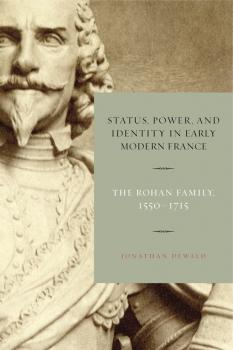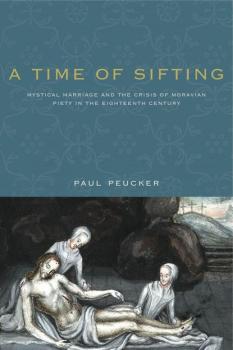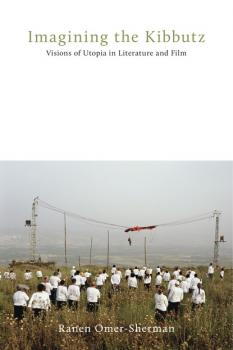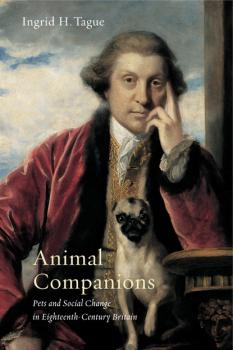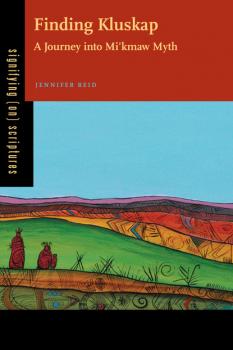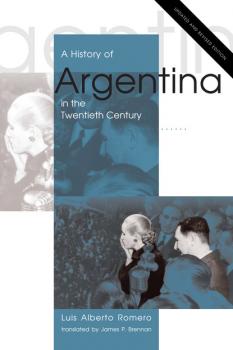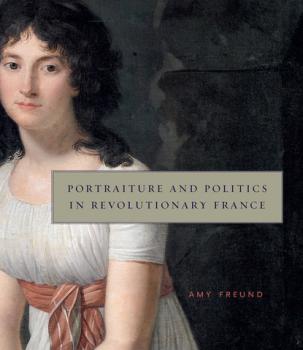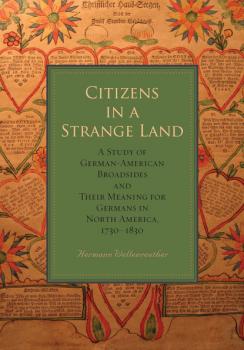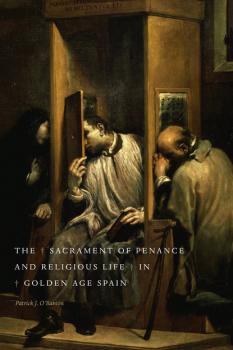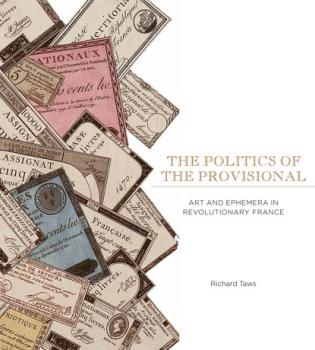ТОП просматриваемых книг сайта:
Историческая литература
Различные книги в жанре Историческая литература, доступные для чтения и скачиванияАннотация
In Status, Power, and Identity in Early Modern France , Jonathan Dewald explores European aristocratic society by looking closely at one of its most prominent families. The Rohan were rich, powerful, and respected, but Dewald shows that there were also weaknesses in their apparently secure position near the top of French society. Family finances were unstable, and competing interests among family members generated conflicts and scandals; political ambitions led to other troubles, partly because aristocrats like the Rohan intensely valued individual achievement, even if it came at the expense of the family’s needs. Dewald argues that aristocratic power in the Old Regime reflected ongoing processes of negotiation and refashioning, in which both men and women played important roles. So did figures from outside the family—government officials, middle-class intellectuals and businesspeople, and many others. Dewald describes how the Old Regime’s ruling class maintained its power and the obstacles it encountered in doing so.
Аннотация
At the end of the 1740s, the Moravians, a young and rapidly expanding radical-Pietist movement, experienced a crisis soon labeled the Sifting Time. As Moravian leaders attempted to lead the church away from the abuses of the crisis, they also tried to erase the memory of this controversial and embarrassing period. Archival records were systematically destroyed, and official histories of the church only dealt with this period in general terms. It is not surprising that the Sifting Time became both a taboo and an enigma in Moravian historiography. In A Time of Sifting , Paul Peucker provides the first book-length, in-depth look at the Sifting Time and argues that it did not consist of an extreme form of blood-and-wounds devotion, as is often assumed. Rather, the Sifting Time occurred when Moravians began to believe that the union with Christ could be experienced not only during marital intercourse but during extramarital sex as well. Peucker shows how these events were the logical consequence of Moravian teachings from previous years. As the nature of the crisis became evident, church leaders urged the members to revert to their earlier devotion of the blood and wounds of Christ. By returning to this earlier phase, the Moravians lost their dynamic character and became more conservative. It was at this moment that the radical-Pietist Moravians of the first half of the eighteenth century reinvented themselves as a noncontroversial evangelical denomination.
Информация о книге
Автор произведения Paul Peucker
Аннотация
In Imagining the Kibbutz , Ranen Omer-Sherman explores the literary and cinematic representations of the socialist experiment that became history’s most successfully sustained communal enterprise. Inspired in part by the kibbutz movement’s recent commemoration of its centennial, this study responds to a significant gap in scholarship. Numerous sociological and economic studies have appeared, but no book-length study has ever addressed the tremendous range of critically imaginative portrayals of the kibbutz. This diachronic study addresses novels, short fiction, memoirs, and cinematic portrayals of the kibbutz by both kibbutz “insiders” (including those born and raised there, as well as those who joined the kibbutz as immigrants or migrants from the city) and “outsiders.” For these artists, the kibbutz is a crucial microcosm for understanding Israeli values and identity. The central drama explored in their works is the monumental tension between the individual and the collective, between individual aspiration and ideological rigor, between self-sacrifice and self-fulfillment. Portraying kibbutz life honestly demands retaining at least two oppositional things in mind at once—the absolute necessity of euphoric dreaming and the mellowing inevitability of disillusionment. As such, these artists’ imaginative witnessing of the fraught relation between the collective and the citizen-soldier is the story of Israel itself.
Информация о книге
Автор произведения Ranen Omer-Sherman
Аннотация
Animal Companions explores how eighteenth-century British society perceived pets and the ways in which conversation about them reflected and shaped broader cultural debates. While Europeans kept pets long before the eighteenth century, many believed that doing so was at best frivolous and at worst downright dangerous. Ingrid Tague argues that for Britons of the eighteenth century, pets offered a unique way to articulate what it meant to be human and what society ought to look like. With the dawn of the Enlightenment and the end of the Malthusian cycle of dearth and famine that marked previous eras, England became the wealthiest nation in Europe, with a new understanding of religion, science, and non-European cultures and unprecedented access to consumer goods of all kinds. These transformations generated excitement and anxiety that were reflected in debates over the rights and wrongs of human-animal relationships. Drawing on a broad array of sources, including natural histories, periodicals, visual and material culture, and the testimony of pet owners themselves, Animal Companions shows how pets became both increasingly visible indicators of spreading prosperity and catalysts for debates about the morality of the radically different society emerging in eighteenth-century Britain.
Информация о книге
Автор произведения Ingrid H. Tague
Аннотация
The Mi’kmaq of eastern Canada were among the first indigenous North Americans to encounter colonial Europeans. As early as the mid-sixteenth century, they were trading with French fishers, and by the mid-seventeenth century, large numbers of Mi’kmaq had converted to Catholicism. Mi’kmaw Catholicism is perhaps best exemplified by the community’s regard for the figure of Saint Anne, the grandmother of Jesus. Every year for a week, coinciding with the saint’s feast day of July 26, Mi’kmaw peoples from communities throughout Quebec and eastern Canada gather on the small island of Potlotek, off the coast of Nova Scotia. It is, however, far from a conventional Catholic celebration. In fact, it expresses a complex relationship between the Mi’kmaq, Saint Anne, a series of eighteenth-century treaties, and a cultural hero named Kluskap.	 Finding Kluskap brings together years of historical research and learning among Mi’kmaw peoples on Cape Breton Island, Nova Scotia. The author’s long-term relationship with Mi’kmaw friends and colleagues provides a unique vantage point for scholarship, one shaped not only by personal relationships but also by the cultural, intellectual, and historical situations that inform postcolonial peoples. The picture that emerges when Saint Anne, Kluskap, and the mission are considered in concert with one another is one of the sacred life as a site of adjudication for both the meaning and efficacy of religion—and the impact of modern history on contemporary indigenous religion.
Информация о книге
Автор произведения Jennifer Reid
Аннотация
A History of Argentina in the Twentieth Century , originally published in Buenos Aires in 1994, attained instant status as a classic. Written as an introductory text for university students and the general public, it is a profound reflection on the “Argentine dilemma” and the challenges that the country faces as it tries to rebuild democracy. Luis Alberto Romero brilliantly and painstakingly reconstructs and analyzes Argentina’s tortuous, often tragic modern history, from the “alluvial society” born of mass immigration, to the dramatic years of Juan and Eva Perón, to the recent period of military dictatorship. For this second English-language edition, Romero has written new chapters covering the Kirchner decade (2003–13), the upheavals surrounding the country’s 2001 default on its foreign debt, and the tumultuous years that followed as Argentina sought to reestablish a role in the global economy while securing democratic governance and social peace.
Аннотация
Portraiture and Politics in Revolutionary France challenges widely held assumptions about both the genre of portraiture and the political and cultural role of images in France at the beginning of the nineteenth century. After 1789, portraiture came to dominate French visual culture because it addressed the central challenge of the Revolution: how to turn subjects into citizens. Revolutionary portraits allowed sitters and artists to appropriate the means of representation, both aesthetic and political, and articulate new forms of selfhood and citizenship, often in astonishingly creative ways. The triumph of revolutionary portraiture also marks a turning point in the history of art, when seriousness of purpose and aesthetic ambition passed from the formulation of historical narratives to the depiction of contemporary individuals. This shift had major consequences for the course of modern art production and its engagement with the political and the contingent.
Citizens in a Strange Land - Hermann Wellenreuther
Max Kade Research Institute: Germans Beyond EuropeАннотация
In Citizens in a Strange Land , Hermann Wellenreuther examines the broadsides—printed single sheets—produced by the Pennsylvania German community. These broadsides covered topics ranging from local controversies and politics to devotional poems and hymns. Each one is a product of and reaction to a particular historical setting. To understand them fully, Wellenreuther systematically reconstructs Pennsylvania’s print culture, the material conditions of life, the problems German settlers faced, the demands their communities made on the individual settlers, the complications to be overcome, and the needs to be satisfied. He shows how these broadsides provided advice, projections, and comment on phases of life from cradle to grave.
Информация о книге
Автор произведения Hermann Wellenreuther
Аннотация
The Sacrament of Penance and Religious Life in Golden Age Spain explores the practice of sacramental confession in Spain between roughly 1500 and 1700. One of the most significant points of contact between the laity and ecclesiastical hierarchy, confession lay at the heart of attempts to bring religious reformation to bear upon the lives of early modern Spaniards. Rigid episcopal legislation, royal decrees, and a barrage of prescriptive literature lead many scholars to construct the sacrament fundamentally as an instrument of social control foisted upon powerless laypeople. Drawing upon a wide range of early printed and archival materials, this book considers confession as both a top-down and a bottom-up phenomenon. Rather than relying solely upon prescriptive and didactic literature, it considers evidence that describes how the people of early modern Spain experienced confession, offering a rich portrayal of a critical and remarkably popular component of early modern religiosity.
Аннотация
In revolutionary France the life of things could not be assured. War, shortage of materials, and frequent changes in political authority meant that few large-scale artworks or permanent monuments to the Revolution’s memory were completed. On the contrary, visual practice in revolutionary France was characterized by the production and circulation of a range of transitional, provisional, ephemeral, and half-made images and objects, from printed paper money, passports, and almanacs to temporary festival installations and relics of the demolished Bastille. Addressing this mass of images conventionally ignored in art history, The Politics of the Provisional contends that they were at the heart of debates on the nature of political authenticity and historical memory during the French Revolution. Thinking about material durability, this book suggests, was one of the key ways in which revolutionaries conceptualized duration, and it was crucial to how they imagined the Revolution’s transformative role in history. The Politics of the Provisional is the first book in the Art History Publication Initiative (AHPI), a collaborative grant from the Andrew W. Mellon Foundation. Thanks to the AHPI grant, this book is available on a variety of popular e-book platforms.

